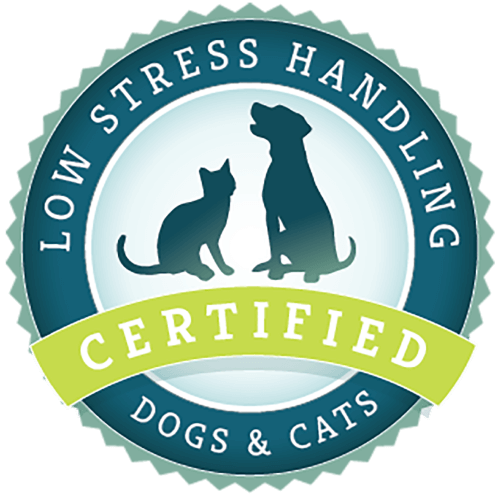What article are you looking for?
Category: I am a Student
Dealing with Difficult Dogs at the Vet: 5 Tips That Don’t Involve Food or Training Time
Veterinarians, shelter workers, and other professionals who work with dogs on a daily basis are always asking me, “If I’m dealing with a dog who can’t have treats because he’s having a procedure later in the day or because he’s not hungry, what can I do to get him to be more cooperative or to behave better?” Creating a Relaxing Environment Well, because the main reason dogs are anxious and uncooperative in the veterinary hospital and shelter situation is fear, my answer is, “It really would be helpful if you avoid scaring the poop out of the dog first.” By that, I
Scrub Jay vs. Dog: Who is Smarter?
My Australian Cattledog, Zoe, was pretty cute, but when it came to brain power, she was no match for her little blue neighbor —a common scrub jay. This three inch tall feathered sneak has her number. Every day, he would lie in wait and then steal bits of her coveted meal right from under her nose. Here’s how it would happen: It’s breakfast or dinner and Mr. Scrub Jay knows. He hears the call of dog food rattling in Zoe’s food-dispensing toy. She’s carefully sucking the kibbles up as they dribble out onto the ground, but he’s sure she’ll soon
Gentle Leader Head Collar: Reinforcement or Punishment?
broc A reader who uses Gentle Leader head collars regularly in training recently asked me about the use of the head collar. States the reader, “I have gotten myself totally confused and need help sorting it out. What category of operant conditioning does the head collar use fall under? Negative punishment? Positive reinforcement? Negative Reinforcement? Positive punishment?” You might think that being able to correctly determine the category of operant conditioning is just a scientific exercise; however, it’s much more than that. For instance, say you read an ad for a product that says it uses negative reinforcement to stop
World Rabies Day: How Vaccinations Can Stop Epidemics
When you live in a country such as the United States, where vaccination of dogs and cats is common, at least in your neighborhood, it can be easy to forget that there’s a reason why we vaccinate. The core vaccines we provide to our pets were invented in response to specific fatal outbreaks and epidemics that have killed many animals but that are much less frequent now due to our widespread vaccination programs. One can be reminded of the negative effects of non-vaccination by looking at shelters statistics or by visiting a developing country. Says Janice Girardi, founder and director
Excessive Barking: Why Some Dogs Bark and How to Fix It
A reader once asked, “How can a dog bark for such great lengths of time? If I holler and scream for a long time, I lose my voice.” The answer, of course, is practice. And it starts when they’re young. Take, for instance, Alf the Aussie, who lives down the street. He started out at the front window, barking sharply at passersby: “Stay away from my property. Just move it on by.” He was so successful at sending the mail carrier and other pedestrians scurrying that when his owner promoted him to the front yard, he increased his alarm duties,
Compassionate Vet Care: Handling Pets in a Pet Friendly Manner
low-stress-book-and-dvd Low Stress Handling® Restraint and Behavior Modification of Dogs & Cats Every day, pets are brought to our hospitals in this state of confusion and fear and we expect them to remain calm and cooperate for procedures. We poke them and prod them and carelessly flop them into various positions when they have no clue what we want. Then, in the name of speed, we react to the struggling pet by imposing some type of “death grip” hold instead of taking a step back and evaluating whether a more thoughtful approach might work better. What’s the

Low Stress Handling® Silver-Level Certification
Individual Certification at this level demonstrates to clients and employers the individual’s dedicated interest in Low Stress Handling®. Hospital Certification at this level demonstrates to clients and staff the hospital’s commitment to appropriately training staff in Low Stress Handling® methods.
Learn More
